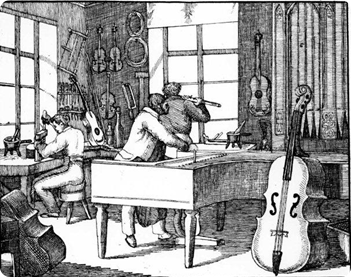Life and work in the factories
Here attention is given to practical aspects of our once so prosper piano and reed organ industry. How did the branch in general develop? Is there a pattern for new establishments or bankruptcies so that the factories were dependent of general business cycles? Where were the maximum or depression points of production? What kind of demands did manufacturers make on the places chosen for establishment? From where did they take materiel and semi-manufactured goods? There are many questions that can be answered by some efforts of research.
The knowledge situation is more serious when we want to know how the instruments were made stage by stage and what was demanded of the workers. In broad outline we do know since there are still factories abroad and the profession is kept alive. But yet, how were things here where we have made instruments on a high level of quality with sound characteristics of their own? What did Malmsjö do to get the beauty of tone as an outstanding feature of their instruments? Finding those of our workers who are still alive and able to tell us is at the last minute. Old photos from the factories are wonderful documents, but they have to be explained. Only people who were there can answer questions of this kind.
Two slide shows illustrating the life and work in the piano and reed organ factories give us an idea of the world where the instruments were made. They may always be completed by other types of relevant information for example on tools for tuning or different instrument models. But we must not forget that we had a strong keyboard instrument tradition far before the time around the beginning of the 19th century when piano workshops spread like wildfire over the country. Therefore we also give room for old craft methods and pre-industrial production that successively developed into industrial production.
 Interior of an instrument making workshop c. 1840. Tools, string thread and instruments are hanging on the walls, bottles of lacquer and polish and gluepots are standing on the bench below. Maybe the man in the middle is the master himself, just tuning a grand piano. (From Ny orbis pictus, or the visible world in pictures 2. Stockholm 1840)
Interior of an instrument making workshop c. 1840. Tools, string thread and instruments are hanging on the walls, bottles of lacquer and polish and gluepots are standing on the bench below. Maybe the man in the middle is the master himself, just tuning a grand piano. (From Ny orbis pictus, or the visible world in pictures 2. Stockholm 1840)

